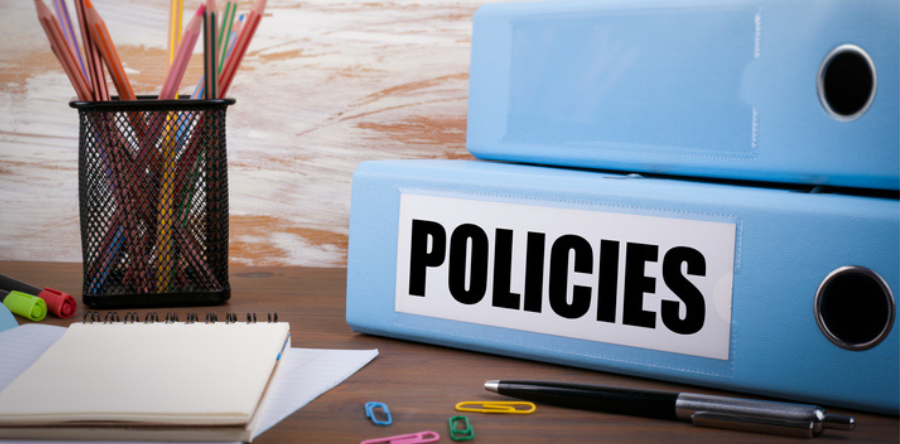The Niagara Institute recently released an excellent resource called The Ultimate Guide to Middle Management: What's Changing, Why it's Hard, and How to Get Ahead. The Guide dives into the challenges of surviving and thriving in the messy middle and points out that "middle managers have taken on a larger role in developing others, translating strategy into tactics, leading up, resolving conflict, and creating a positive team culture."
Relationship building, resilience and agility are discussed, but the guide doesn’t really touch on health and safety and mental health. This is a huge area of responsibility for managers. They play a critical role in keeping people healthy and safe and creating a psychologically safe workplace.
While most agree creating a psychologically safe culture is important, figuring out how to turn commitment into action can be intimidating and overwhelming.
Read: Don't Just Tell Managers They are Important to Your Organization: Show Them
At the CEO Health + Safety Leadership Network virtual roundtable in May, Milena Braticevic presented Mental Resilience and Psychological Safety, an experiential workshop loaded with tips, tools and exercises to help leaders and managers do just that. We're in the process of developing a guide based on her presentation, as well as insights from this blog and previous CEO Health + Safety Leadership Network white papers.
Psychological Safety in Practice: A Guide for Managers will be released later this year. In the meantime, we've curated a list of 10 tips from previous posts, along with links to the full articles, to help you and your managers get started.
Leadership Behaviours to Support Mental Health
- Practice Self Care - Managers have the same human experience and feelings as their employees. It's important that they become active in their own self-care and ask for support when needed. No one is immune to the stress - not even managers.
- Use story telling - By sharing stories of personal experience and challenges that they are facing themselves; managers can help normalize coping. It can be helpful for employees to see that their manager also has worries, you are clear on what you can and can't control and you are doing the best you can.
- Listen - Managers should connect with employees and open the lines of communication. This can help employees build confidence and trust to share their own feelings - both good and bad. It can also knock down stigma around vulnerability and show that it's fine to ask for help and to share concerns.
Trust: A core pillar of a psychologically safe workplace
- Ask for informal feedback - Asking employees for feedback such as, "How do you think things are going? Do you have any tips for me?" demonstrates that you value their knowledge and insight. When employees trust that they can be respectfully candid, they are more likely to engage in this type of authentic exchange.
- Be transparent and open in your communication - When employees see that you are willing to share both good and bad news, and you are honest about your own missteps and mistakes, they will be more likely to give you the benefit of the doubt in the future. It also sends a clear message that you trust them enough to be vulnerable, and to share information and news even when it may reflect poorly on the organization, or on yourself as a leader. Transparency isn't always comfortable, but it can go a long way towards building a stronger, more trusting relationship with employees.
Tips and Tools for Mitigating Mental Health Risk and Promoting Mental Health
- Be observant and accessible - You should never diagnose mental health concerns. However, it is absolutely appropriate for leaders and managers to observe employees' performance and behaviours and raise a flag if you note a concern. If you see a change in behavior or attitude that is negatively affecting performance, don't just assume that it is a behavioural issue. Instead, seek to understand the situation. This is called "Duty to Inquire." It involves taking a non-threatening, confidential approach and simply asking the employee an open question regarding the observed change in behaviour. For example, "It is not like you to be late or miss assignments. I have noticed over the last couple of weeks you missed two assignments and have been late three times. Can you help me understand what has changed?" This question provides the employee an opportunity to share that they are having a hard time or experiencing stress or a mental health concern, which gives you the opportunity to provide accommodation if needed.
Leaders Can Help Employees Reduce Their Risk for Mental Fatigue
- Monitor capacity load - Be mindful of the demand on employees, how many projects they have, and how many hours they're spending on them. Avoid the urge to focus solely on the outcome of what's getting done; be aware of the process and effort that it takes. Check in with employees about their workload and help them set realistic goals.
- Promote boundary-setting - Give employees permission to set boundaries and to say no to requests with an explanation as to why they're saying no, or what would need to happen for them to feel okay about saying yes.
- Remove assumptions - Many employees are working at all hours of the day, and most days of the week. This schedule can result in employees sending and receiving emails at any time of the night and weekend. Without clarity of expectations, some may believe they're expected to respond even outside core hours. Leaders can help by clarifying expectations and modelling healthy behaviours. The more specific and clear the directions, the better.
- Eliminate meeting madness - It's important to meet and share. However, leaders should be observant of how many hours employees spend in meetings and whether all the meetings are valuable and necessary. Meeting madness occurs when employees are required to be in so many meetings that they don't have time during core hours to do their assigned work.
Want more tips?
Explore past posts on this blog and watch for regular updates.
Check out Psychological Safety: A Roadmap, developed by WSPS and Howatt HR.
We also recommend you download the Niagara Institute Guide. It is chock full of information and tools.
Stay tuned for Psychological Safety in Practice which will be a great companion piece to help your managers feel confident and competent in creating a psychologically safe workplace.

 Fresh Communications in collaboration with WSPS
Fresh Communications in collaboration with WSPS



